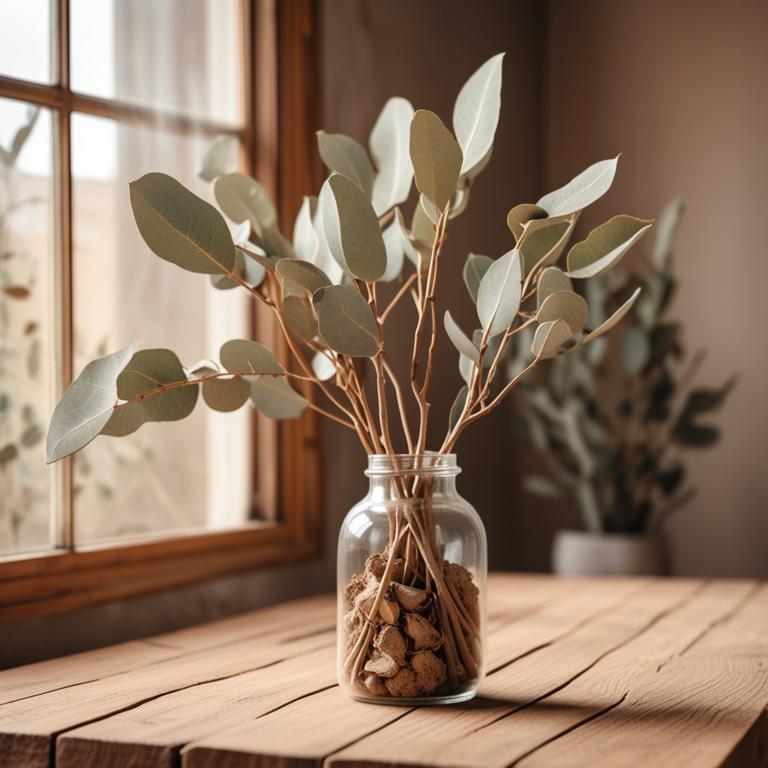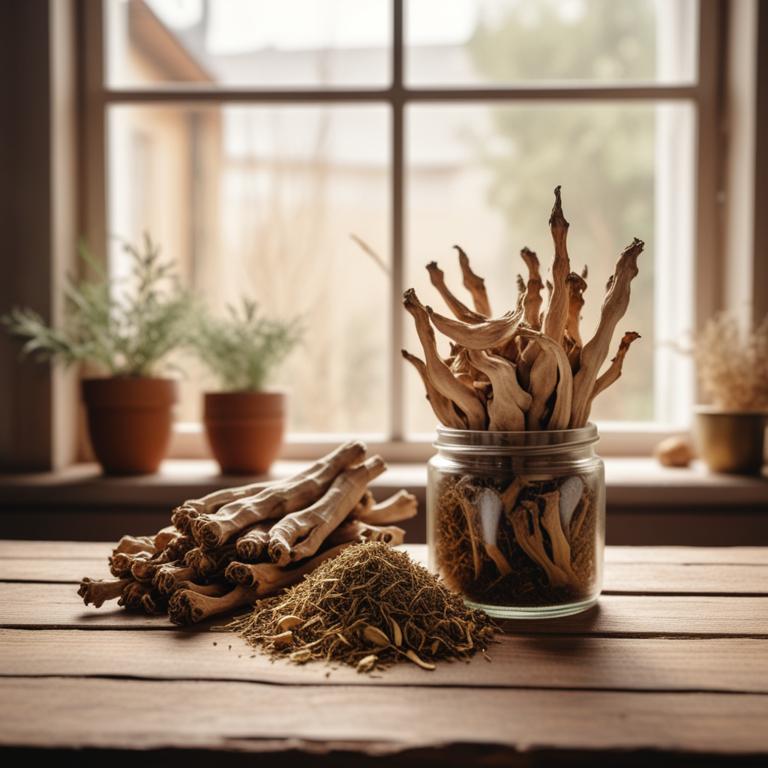Updated: Nov 30, 2024
8 Herbal Tinctures For Mucus In Throat
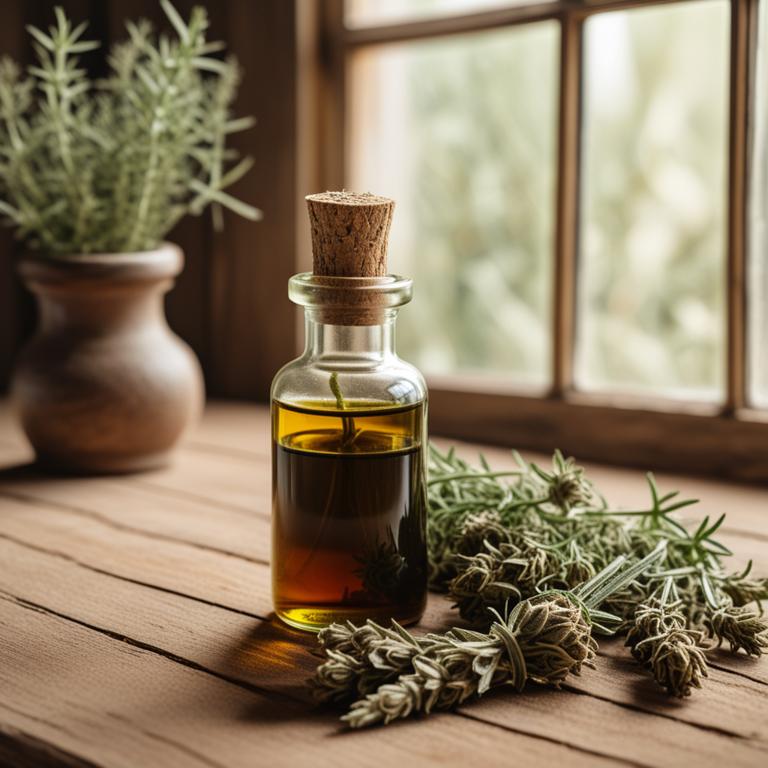
Herbal tinctures can help relieve mucus in the throat by targeting the root cause of the problem - inflammation and congestion.
These natural remedies work by reducing swelling and opening up airways, making it easier to breathe and swallow. Herbal teas, like those made from Eucalyptus globulus, have decongestant properties that help break down mucus and ease a sore throat. The menthol in eucalyptus oil helps to thin out mucus, making it easier to expel. Drinking eucalyptus tea can also help to ease a cough and clear congestion. Echinacea purpurea is another herb that's often used to support immune function and reduce inflammation in the throat. It contains compounds that stimulate the production of white blood cells, helping to fight off infections and reduce the severity of a sore throat.
Licorice root, or Glycyrrhiza glabra, has anti-inflammatory properties that can help to soothe a sore throat and reduce swelling. It also contains compounds that help to thin out mucus, making it easier to expel. Using herbal tinctures to relieve mucus in the throat can bring several benefits to your life. For one, it can help to reduce the need for over-the-counter medications, which can have unpleasant side effects. Herbal teas can also provide a natural and gentle way to soothe a sore throat and promote healing. Additionally, many herbal tinctures are rich in antioxidants, which can help to protect the body from damage caused by free radicals.
By incorporating herbal tinctures into your daily routine, you may find that you're able to recover more quickly from illnesses and feel more energized and focused.
This article explains in detail what are the best herbal teas for mucus in throat and wh.
Also, you may be interested in...
Today Free Bonus!
The Ultimate Herb Drying Checklist
(For Long-Lasting Powerful Medicinal Effect)
How to easily dry herbs that don't mold and that keep their strong medicinal power for more than 1 year.
Table of Contents
1. Eucalyptus globulus

Eucalyptus globulus tinctures contains a concentrated extract of the leaves of the eucalyptus tree, which has been used for centuries to help clear mucus from the throat.
The main bioactive constituents responsible for this effect are eucalyptol, camphor, and borneol, which have decongestant and expectorant properties. Eucalyptol, in particular, helps to thin and loosen mucus, making it easier to cough up, while camphor provides a cooling sensation that can help reduce inflammation and congestion. Borneol has anti-inflammatory properties that can help reduce swelling in the throat and airways.
When taken as a tincture, these bioactive compounds can help to quickly and effectively clear mucus from the throat, providing relief from congestion and coughing.
- Gather 250ml of vodka (at least 80 proof) and 40g of fresh Eucalyptus globulus leaves in a clean glass jar.
- Place the Eucalyptus leaves in the jar and cover them with vodka. Make sure the leaves are completely submerged.
- Seal the jar and store it in a cool, dark place for 2-3 weeks, shaking the jar every day.
- After 2-3 weeks, strain the mixture through a cheesecloth or a coffee filter into another clean glass jar. Discard the solids.
- Transfer the tincture to a dark glass bottle and store it in a cool, dark place. The tincture is ready to use. Take 10-20 drops as needed to soothe a sore throat.
2. Echinacea purpurea

Echinacea purpurea tinctures contains active constituents like alkylamides, glycosides, and phenolic acids.
These compounds have anti-inflammatory properties, which can help reduce swelling in the throat and loosen mucus. The alkylamides in Echinacea purpurea tinctures have also been shown to have antimicrobial properties, which can help combat infections that may be causing excessive mucus production. Glycosides in Echinacea purpurea tinctures can help stimulate the immune system and increase the production of white blood cells, which can fight off infections.
The phenolic acids in Echinacea purpurea tinctures have antioxidant properties, which can help reduce oxidative stress and promote healing in the throat.
- Gather 1 cup of Echinacea purpurea flowers and 2 cups of vodka in a clean glass jar.
- Add the Echinacea flowers to the jar and pour the vodka over them, making sure they are completely covered.
- Close the jar and store it in a dark place for 2-3 weeks, shaking it daily to help the extraction process.
- After 2-3 weeks, strain the liquid through a cheesecloth or a coffee filter into another clean glass jar, discarding the solids.
- Store the Echinacea tincture in a cool, dark place and use 20-30 drops in water or tea as needed to help soothe a sore throat.
3. Glycyrrhiza glabra

Glycyrrhiza glabra tinctures contains saponins and flavonoids as its active constituents.
These compounds have anti-inflammatory and antioxidant properties that help reduce swelling and fight off infections in the throat. The saponins, particularly glycyrrhizin, have a soothing effect on the mucous membranes, helping to thin and clear out mucus and reduce coughing. The flavonoids, such as isoliquiritigenin and licoricidin, have antimicrobial properties that help combat bacterial and viral infections that cause throat congestion.
By reducing inflammation and fighting off infections, Glycyrrhiza glabra tinctures can help alleviate mucus in the throat.
- Gather 1 cup of dried Glycyrrhiza glabra root and 2 cups of 80% vodka.
- Combine the dried root and vodka in a clean glass jar, making sure the root is fully covered.
- Steep the mixture for 2-3 weeks in a cool, dark place, shaking the jar every day.
- Strain the liquid through a cheesecloth or a coffee filter into another glass jar, discarding the solids.
- Bottle the tincture and store it in a cool, dark place. Use 15-30 drops, 3-4 times a day, to help soothe a sore throat.
4. Sambucus nigra
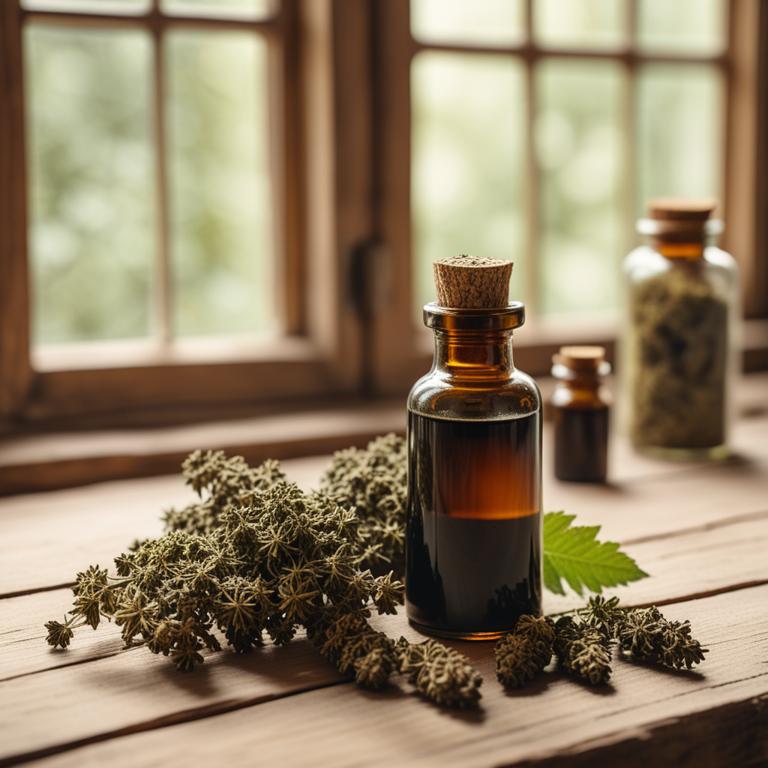
Sambucus nigra tinctures contains bioactive constituents such as isoquercitrin, rutin, and saponins.
These compounds have anti-inflammatory properties that help reduce swelling in the throat, making it easier to breathe. Sambucus nigra also contains flavonoids like quercetin, which acts as a natural decongestant, thinning mucus and promoting its expulsion. The tannins present in Sambucus nigra help dry up excess mucus, providing temporary relief from congestion.
By reducing inflammation and drying up mucus, Sambucus nigra tinctures can help alleviate symptoms of a sore throat and cough.
- Get 1 cup of Sambucus nigra flowers (or 250g). Clean and dry them.
- Combine the flowers with 2 cups of 80% vodka in a clean glass jar. The flowers should be completely covered.
- Steep the mixture in a cool, dark place for 2-3 weeks. Shake the jar daily.
- After 2-3 weeks, strain the liquid through a cheesecloth or a coffee filter into another clean glass jar. Discard the solids.
- Store the Sambucus nigra tincture in a cool, dark place. Use 20-30 drops, 2-3 times a day, as needed to soothe a sore throat and reduce mucus.
5. Zingiber officinale

Zingiber officinale tinctures contains compounds like gingerols and shogaols, which have anti-inflammatory properties that help reduce mucus in the throat.
These bioactive constituents also exhibit expectorant properties, making it easier to expel mucus and promote a clear airway. Gingerols and shogaols have also been shown to have antimicrobial properties, helping to fight off underlying infections that can cause excessive mucus production. By reducing inflammation and fighting off infections, Zingiber officinale tinctures can help alleviate mucus buildup in the throat.
The warming and soothing effects of gingerols and shogaols can also provide relief from congestion and discomfort.
- Gather 250g of fresh or dried Zingiber officinale (Ginger) root.
- Combine the ginger root with 1 cup of 80% ethanol (or vodka) in a clean glass jar.
- Steep the mixture in a cool, dark place for 2-3 weeks, shaking the jar daily.
- Strain the mixture through a cheesecloth or a coffee filter into another clean glass jar.
- Discard the ginger solids and store the tincture in a cool, dark place. Use 20-30 drops in water or tea as needed to relieve mucus in the throat.
6. Thymus vulgaris
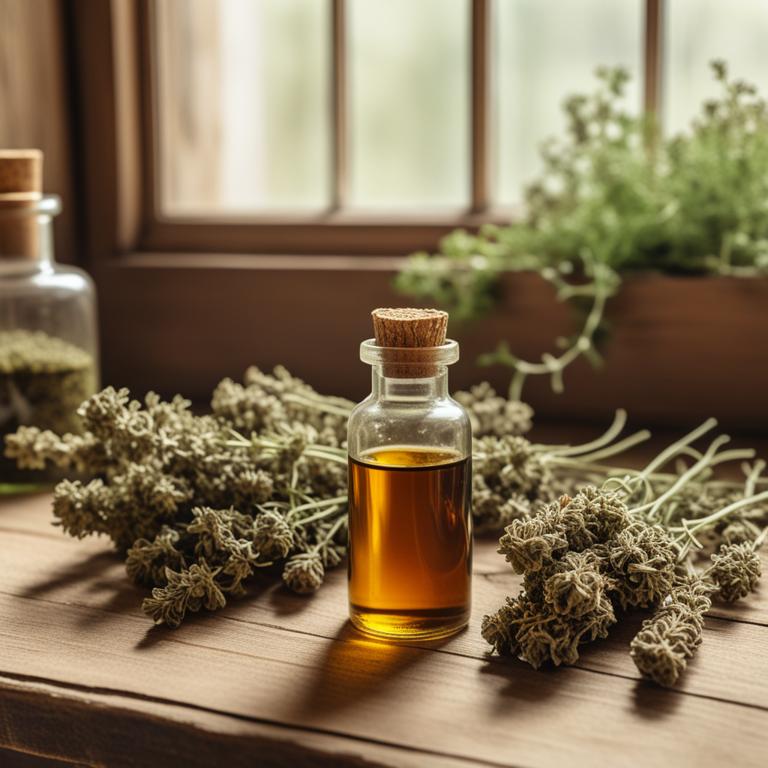
Thymus vulgaris tinctures contains thymol and carvacrol, two key bioactive compounds that give it its medicinal properties.
These compounds have antimicrobial and antitussive properties, which help to fight off infections that cause excess mucus in the throat. Thymol's expectorant properties help to thin and clear out mucus, making it easier to cough up, while carvacrol's anti-inflammatory properties reduce swelling and irritation in the throat. This combination of properties makes Thymus vulgaris tinctures effective in relieving respiratory issues, including mucus buildup in the throat.
By using Thymus vulgaris tinctures, you can help to clear out excess mucus and promote a healthy respiratory system.
- Gather ingredients: 1 cup of fresh Thymus vulgaris (Thyme) leaves and flowers, 2 cups of 80-proof vodka, and a glass jar with a lid.
- Combine thyme and vodka in the glass jar, making sure the thyme is fully covered.
- Store the jar in a cool, dark place and let it sit for 2-3 weeks, shaking the jar every day.
- After 2-3 weeks, strain the liquid through a cheesecloth or a coffee filter into another glass jar, discarding the solids.
- Store the thyme tincture in the glass jar and use 20-30 drops, 3-4 times a day, to help soothe a sore throat and reduce mucus.
7. Ginkgo biloba

Ginkgo biloba tinctures contains flavonoids and bilobalide as its bioactive constituents.
These compounds help break down and thin out excess mucus in the throat, making it easier to expel. The flavonoids, particularly quercetin, have anti-inflammatory properties that reduce swelling and irritation in the throat, further relieving congestion. Bilobalide works to decrease the production of mucus, thereby reducing its thickness and viscosity.
By reducing mucus thickness and production, Ginkgo biloba tinctures help alleviate throat congestion and make breathing easier.
- Gather 1 cup of fresh Ginkgo biloba leaves and 2 cups of 80-proof vodka in a clean glass jar.
- Chop the Ginkgo biloba leaves into small pieces and place them in the jar with the vodka.
- Seal the jar and let it sit in a cool, dark place for 2 weeks, shaking the jar every day.
- After 2 weeks, strain the mixture through a cheesecloth or a coffee filter into another clean glass jar.
- Store the Ginkgo biloba tincture in the fridge and take 10-20 drops as needed to help relieve mucus in the throat.
8. Rosmarinus officinalis

Rosmarinus officinalis tinctures contains a number of bioactive constituents, including camphor, borneol, and rosmarinic acid.
These compounds have antimicrobial properties, which help to reduce the amount of mucus in the throat by inhibiting the growth of bacteria and other pathogens. Rosmarinus officinalis tinctures also contain expectorant properties, which help to thin and loosen mucus, making it easier to cough up and clear from the throat. This can be particularly helpful in relieving congestion and coughs associated with respiratory infections.
The combination of antimicrobial and expectorant properties in Rosmarinus officinalis tinctures makes it a useful natural remedy for managing mucus in the throat.
- Gather 1 cup of Rosmarinus officinalis leaves and flowers. Use clean scissors to cut them.
- Combine 1 cup of Rosmarinus officinalis with 2 cups of vodka in a clean glass jar. Stir well.
- Seal the jar and let it sit in a cool, dark place for 2-3 weeks. Shake the jar daily.
- After 2-3 weeks, strain the mixture through a cheesecloth or a fine-mesh sieve into another clean glass jar. Discard the solids.
- Store the tincture in a cool, dark place. Use 20-30 drops in water or tea to help with mucus in the throat.
FAQ
Can drinking herbal tea prevent mucus in throat from forming?
Drinking herbal tea may help reduce mucus in your throat.
Certain teas, like thyme and eucalyptus, contain ingredients that can break down excess mucus. When you drink these teas, they can help ease congestion and soothe your throat.
This is because the ingredients in these teas have natural decongestant properties.
Is it safe to consume herbal teas for mucus in throat every day?
Consuming herbal teas for mucus in the throat daily is generally safe, but be mindful of the ingredients.
Some herbs, like thyme and eucalyptus, can be too strong if taken in large amounts or for a long time.
Start with small amounts and adjust as needed to avoid discomfort or interactions with medications.
How long does it take for herbal teas to show results in mucus in throat?
Herbal teas can help soothe a sore throat and thin out mucus.
The results can be seen in a few days to a week. Some people notice a difference within 2-3 days, while it may take a bit longer for others.
The effectiveness can depend on the type of tea and the severity of the mucus buildup.
Related Articles
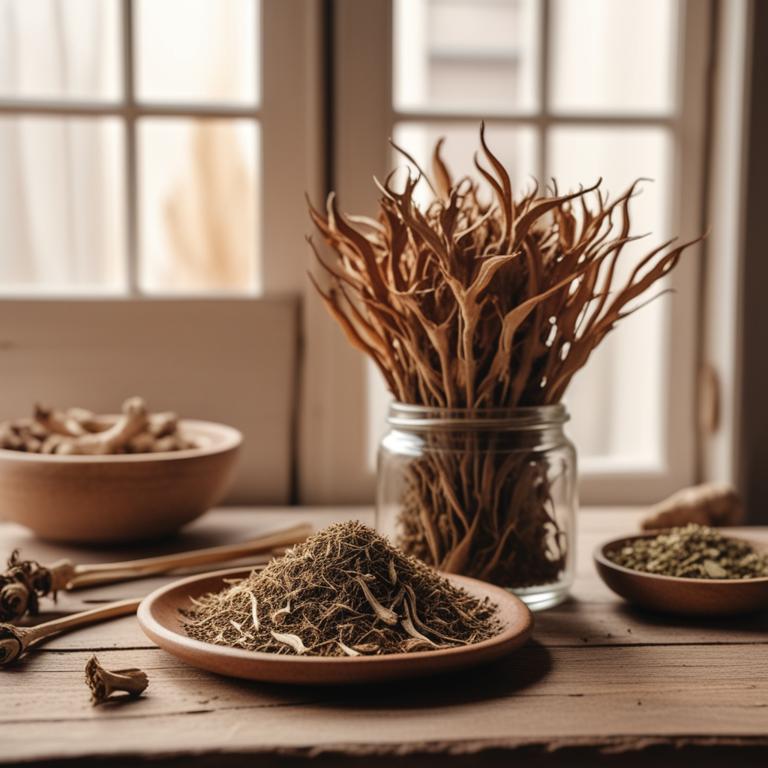
Hoarse Voice: Understanding Causes and Using Medicinal Herbs and Herbal Preparations

Hay Fever: Causes, Herbal Preparations, and Medicinal Herbs for Relief
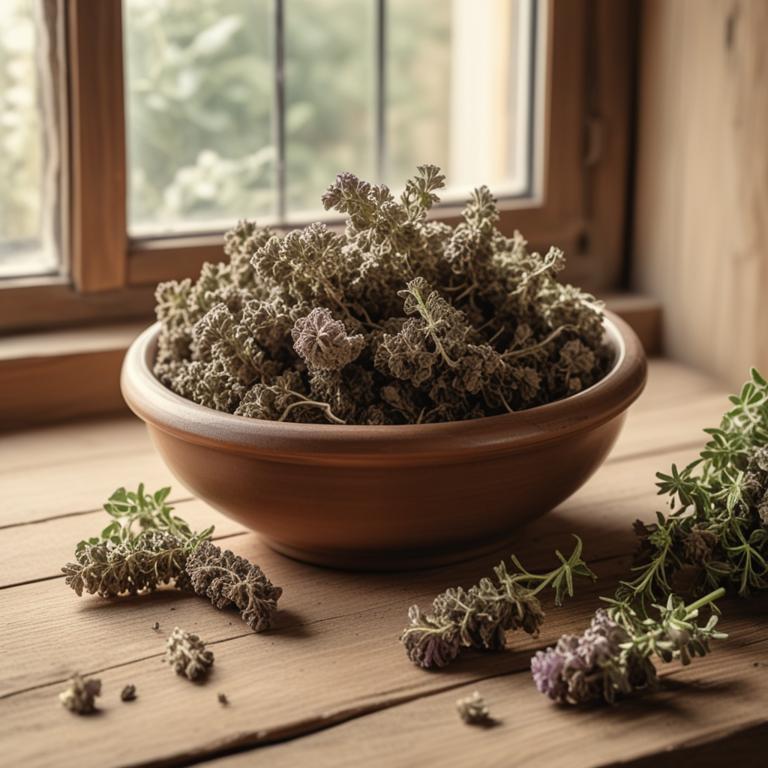
Mucus in Throat - Understanding the Causes and Herbal Cures
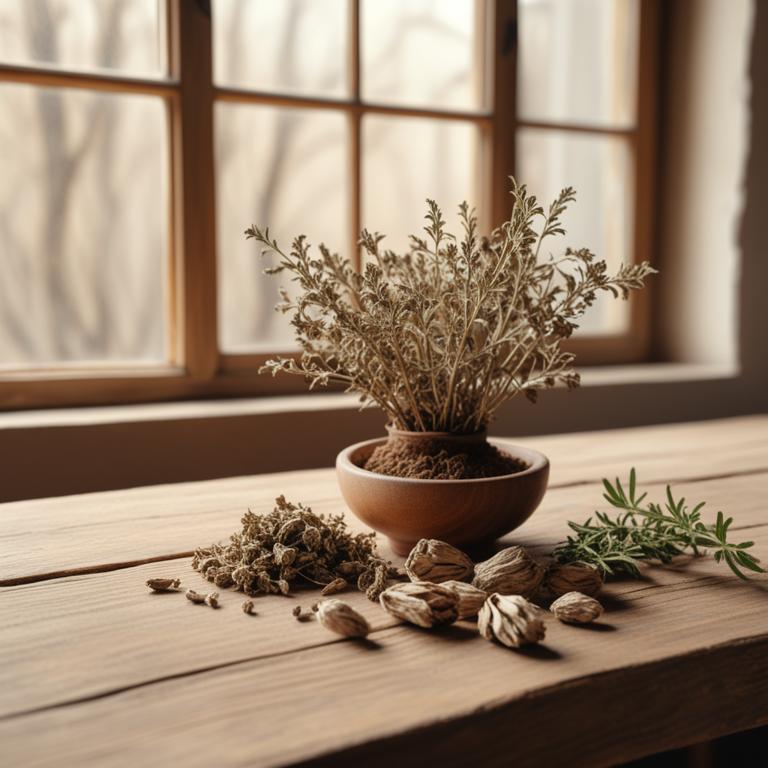
Sore Throat Causes, Herbal Cures, and Medicinal Plant Remedies
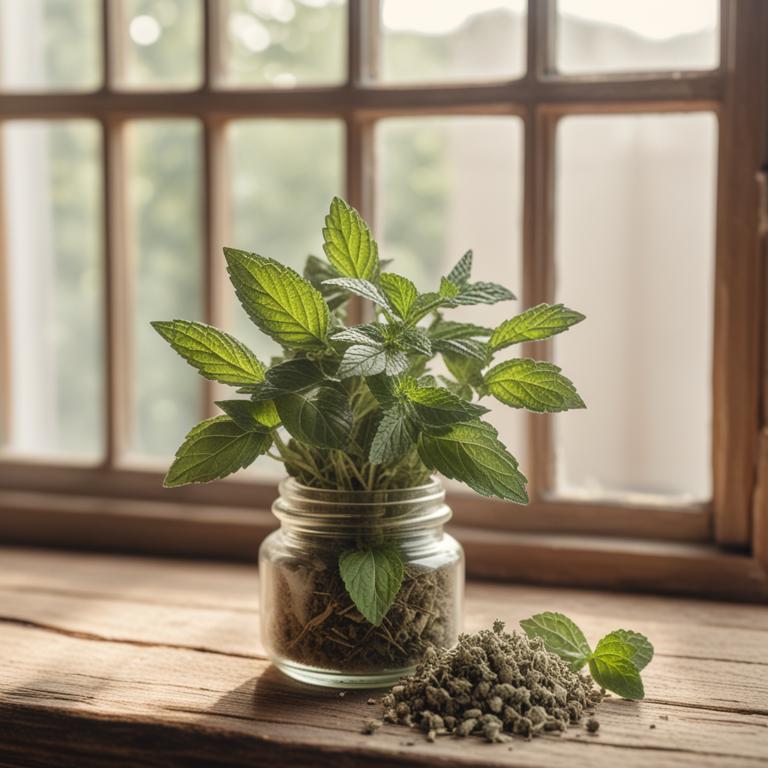
Laryngitis: Causes, Symptoms, and Herbal Preparations for Relief
